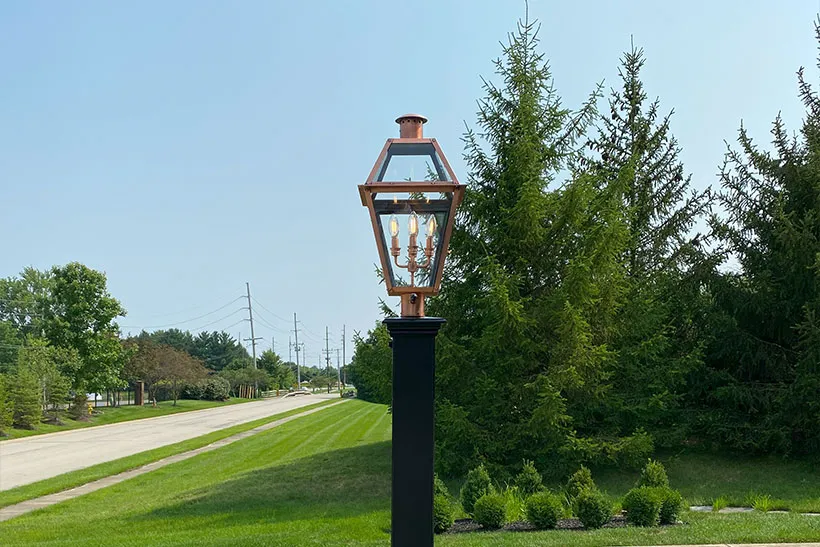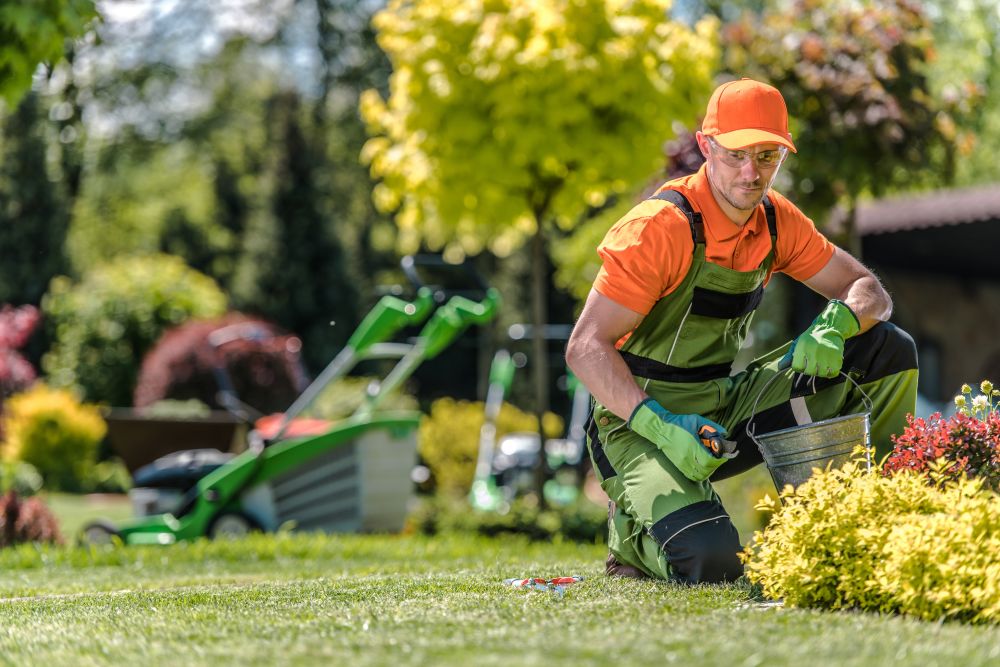Light poles balance form and function, improving the streetscape while meeting the requirements of modern infrastructure. Thoughtful pole design can combine smart technology with visual appeal to serve both practical and aesthetic purposes in open areas. By blending seamlessly into their surroundings, light poles help define the character of walkable communities and public spaces. Here are some innovative light pole designs that can enhance community aesthetics:
Wood Poles
Wooden light poles add organic visual elements that help soften the appearance of rigid cityscapes. They are made more durable through engineered laminates that offer long-term resistance to weather, insects, and structural fatigue. Tapered and square forms offer versatility and can be adapted to historic, coastal, or park-themed environments. Clear finishes or dark stains help enhance the wood grain, adding warmth and visual interest to quiet pedestrian areas.
Wood poles may support globe lamps or lantern-shaped fixtures, which complement traditional streetscapes and countryside paths. Internal cable routing keeps profiles clean and reduces visual clutter from external attachments. Designers may select wood poles for town centers, nature trails, and waterfront walkways that require discreet lighting. The natural material pairs well with trees, planters, and stonework, reinforcing biophilic design principles in public spaces.
Smart Poles
Multi-function poles with internal systems help reduce visual clutter by concealing sensors and communication equipment. These structures include power routing, signal wiring, and device mounts without relying on external arms or junction boxes. This compact integration allows a single vertical structure to provide lighting, surveillance, connectivity, and environmental monitoring. The clean facade enhances visual quality in various locations, from plazas and transportation centers to mixed-use commercial areas.
Smart poles blend well with contemporary architecture, curved benches, and low-profile landscaping. Their internal compartments can be locked and weatherproof, helping to prevent vandalism and environmental wear. These poles suit technology-enabled cities and support infrastructure development in a discreet and aesthetically pleasing way.
Modular Poles
Modular light poles have interchangeable collars or brackets that suit a wide range of urban hardware. These poles can include pre-mounted exterior channels for attaching banners, security cameras, speakers, or traffic signals. The modular system allows cities to adapt poles for festival use, public alerts, or commercial signage during off-seasons. Contractors can install hardware without drilling or rewiring, preserving the pole’s surface and long-term structural integrity.
Combining multiple functions on a single pole helps minimize sidewalk obstruction and frees up valuable space in public areas. Cities can add and remove temporary decorations, such as seasonal or event branding, without disrupting the lighting function. They may customize bracket heights and pole spacing by neighborhood, reinforcing local design themes or zoning guidelines.
Historic Poles
Classical lighting poles are heritage-inspired and replicate traditional designs. Fluted shafts, decorative bases, and acorn-top fixtures enhance the ambiance of courtyards, markets, and cultural districts. Despite their vintage styling, the poles support modern features such as LED fixtures, timers, and smart lighting controls. They comply with modern lighting requirements but retain the classic appearance of early infrastructure.
These poles may be finished in dark bronze, green, or black to complement wrought-iron fences and historic facades. Local branding can be incorporated into cast details like scroll arms or medallion badges, contributing to a cohesive streetscape. These poles enhance the charm of walkable downtowns and historic areas, reinforcing authenticity and cultural continuity in revitalized urban spaces.
Modern Poles
Composite and aluminum poles feature distinctive geometric profiles that suit modern buildings and landscapes. They are lightweight, easy to install, and resistant to corrosion, promoting reliable long-term performance in outdoor environments. Surface finishes may resemble other materials, such as brushed steel, granite, or ceramic. This allows the poles to complement the surrounding architecture. Tapered, faceted, or curved designs add sculptural interest to campuses, museums, and performing arts centers.
Install Custom Light Poles
Custom light poles help convey identity, values, and attention to detail through thoughtful design in shared urban spaces. Flexible mounting systems make sure the poles can be adjusted as cities expand and requirements change. Decorative poles enhance streetscapes and support safety equipment, contributing to form and function. With a wide range of options available, architects, planners, and engineers can tailor solutions to fit their specific project goals. Learn more about your lighting options and how they impact the aesthetics and functionality of your project.






Leave a Reply